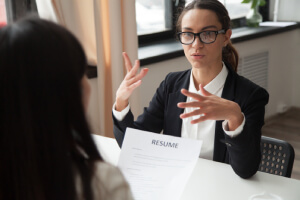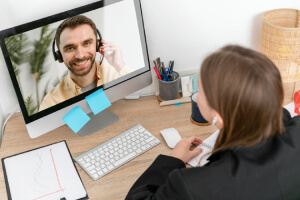What to Wear to a Job Interview: Attire Tips for Every Professional Setting
First impressions are everything in case of job interviews. Your resume may get you in the door, but how you dress may play a big role in determining how potential employers perceive you. In fact, how you are dressed for an interview says so much about your level of professionalism, your attention to detail, and even your understanding of workplace norms. Whether you are looking for your first job or something higher, attire is among the essential parts of the preparation.
Here is all you need to know about interview attire, together with pragmatic tips and advice about presenting yourself in the best light possible.
Why Your Interview Attire Matters
In essence, a candidate’s attire speaks of their appreciation for company culture and seriousness toward their occupation. Dressing up for the interview will give you a confidence boost, whereas dressing down inappropriately can put you at a disadvantage even if you are the most qualified candidate.
And this is the tricky part: deciding just how formal or casual to be is hardly ever straightforward. Depending on the industry, it could be quite different; even companies in the same field sometimes have opposing dress codes. Hence, it is advisable to do some research beforehand.
Some General Considerations

Do Your Research: Know the Company Culture
The very first step when picking an outfit for your interview is to understand the company’s culture. Is it formal, casual, or somewhere in-between? Normally, checking for clues on their website, on social media, or even looking at granulated employee photos on LinkedIn should shed some light on their dress code. And if you know somebody working there, ask them about it.
- Corporate settings (think law firms, finance houses, big consulting firms) generally call for a more professional setting, meaning suits and fine dresses.
- Tech and creative industries (startups, advertising, media) might be more business casual or outright casual.
- Retail, hospitality, or service industries can be looser but still require a neat, professional look.

Choose the Right Fit
Regardless of the outfit’s beauty, it is going to make less than a stellar impression should it not fit correctly. Clothes that are too tight or too loose become distracting and uncomfortable. Make sure you wear one that fits perfectly and allows freedom of movement-if your interview involves any physical activity, like touring the office, that should be a consideration.

Keep it Simple and Professional
If you cannot decide on an outfit, just keep it simple. Solid colors and subtle patterns will do; just stay away from anything big or ostentatious. A plain button-down shirt along with a casual blazer or a simple dress would perfectly straddle the line between stylish and business.
Remember: You want something that keeps the interviewer focused on you and your skills and not your outfit.
Outfits for Specific Interview Situations

For Men
- Business Professional: For a corporate job, a suit and tie is probably best. Go with a navy suit, charcoal suit, or black suit for its timeless look. Pair with a white shirt, simple tie, and leather dress shoes.
- Business Casual: Should the office have a more relaxed dress code, a blazer with dress trousers and a button-up shirt (tie is optional) could have been worn. Loafers or oxfords are the best choices for leather shoes; they will still make an impression without going full suit.
- Casual: If the company is lax about its dress code, then plan for smart trousers or chinos paired with a good-fitting shirt or a sweater. Keep off the jeans unless you are sure it is acceptable.

For Women
- Business Professional: The setting for a formal or highly competitive interview. These consist of a tailored business suit with a blazer and skirt or pants. Wear a blouse or a buttoned-up shirt and closed-toe heels or flats. Neutral colors such as black, navy, or gray are considered traditional.
- Business Casual: For interviews for less formal companies, wear a well-fitted blouse and trousers or a pencil skirt. A professional dress is also entirely acceptable. Whatever you wear, it should look respectable; nothing with too revealing necklines or crotch-skimming skirts.
- Casual workday: If the company is laid back, put on a smart blouse with trousers or a neat, knee-length dress. Pairing with flats or low heels works. Avoid anything too trendy or too casual, like huge sweaters and graphic tees.

For Virtual Interviewing
With virtual interviews now a normal part of hiring processes, you have to dress appropriately – environment-wise there is much less control. So, the fine line between comfort and professionalism is hard to walk as the only person who can view your whole outfit is you.
Tip: Avoid any kind of patterns that might cause distortion on camera. Look best on screen by sticking to darker solid colors.
Accessory and Grooming

Minimal Jewelry
Your jewelry should complement your outfit and never overpower it. Ideally, the jewelry should be simple, like a pair of stud earrings or a watch. Large, flashy statement pieces are a no-no as they can work against your professional image.

Grooming Matters
Your grooming should always be to the professional standard. For the gentlemen, facial hair is either neat and trimmed or clean-shaven. For the ladies, something simple that keeps the hair away from one’s face should do. Both should lay off the heavy-duty cologne or perfume, as strong smells can be quite off-putting in a professional area.

Remember Your Shoe Game
Make sure the shoes are clean and well-maintained. No sandals or sneakers; these are too casual. Choose the polished ones with a professional vibe. That would be leather oxfords or loafers for a man, and heels or flat shoes with closed toes for that woman.
What Not to Wear

Jeans and Casual Clothing
Depending on the relaxed nature of the setting, jeans might not be encouraged for an interview, so to speak. Casual attire is best saved for first-day wear, in case your application goes through. It is better to be slightly overdressed than to be underdressed.

Bright Colors and Loud Patterns
Adding a splash of color is one way to let your personality through, bright colors could be distracting in an interview setting. Keep the foreground of your outfit in neutral colors, and put in color through accessories, in shades of navy, gray, or muted pastels.

Too Trendy or Too Out-of-Date
Avoid wearing clothings either that are highly trendy or untrendy. Filling the wardrobe with all the latest trends really looks like trying too hard, whereas being untrendy creates a little impression that one is out of step. So put together a balanced, classic look that communicates your professionalism.
From First Glance to Final Offer
Choosing the right outfit for your job interview is about more than just looking good, it’s about making a strong, professional first impression that sets the tone for the rest of your meeting. When you dress appropriately for the company and the role, it shows that you’ve put thought and effort into your appearance, and it allows you to focus on showcasing your skills and qualifications.
Remember, the key is to match your attire to the company’s culture while always keeping professionalism at the forefront. A polished and well-considered outfit will not only boost your confidence but also enhance your chances of landing the job.
Discover More Tips

How to Stand Out in Interviews by Answering Common Questions
Job interviews can be nerve-racking, especially if one goes in expecting an unfamiliar answer. Like snowflakes, no two job interviews are ever quite the same. However, some of those questions invariably do show up.
Learn More
The Top 10 Video Interview Mistakes and How to Avoid Them
With the emergence of technologies, video interviews have become mainstream. For either an entirely remote position or a hybrid one, your ability to represent professionally in a virtual environment can make or break your success rate.
Learn More